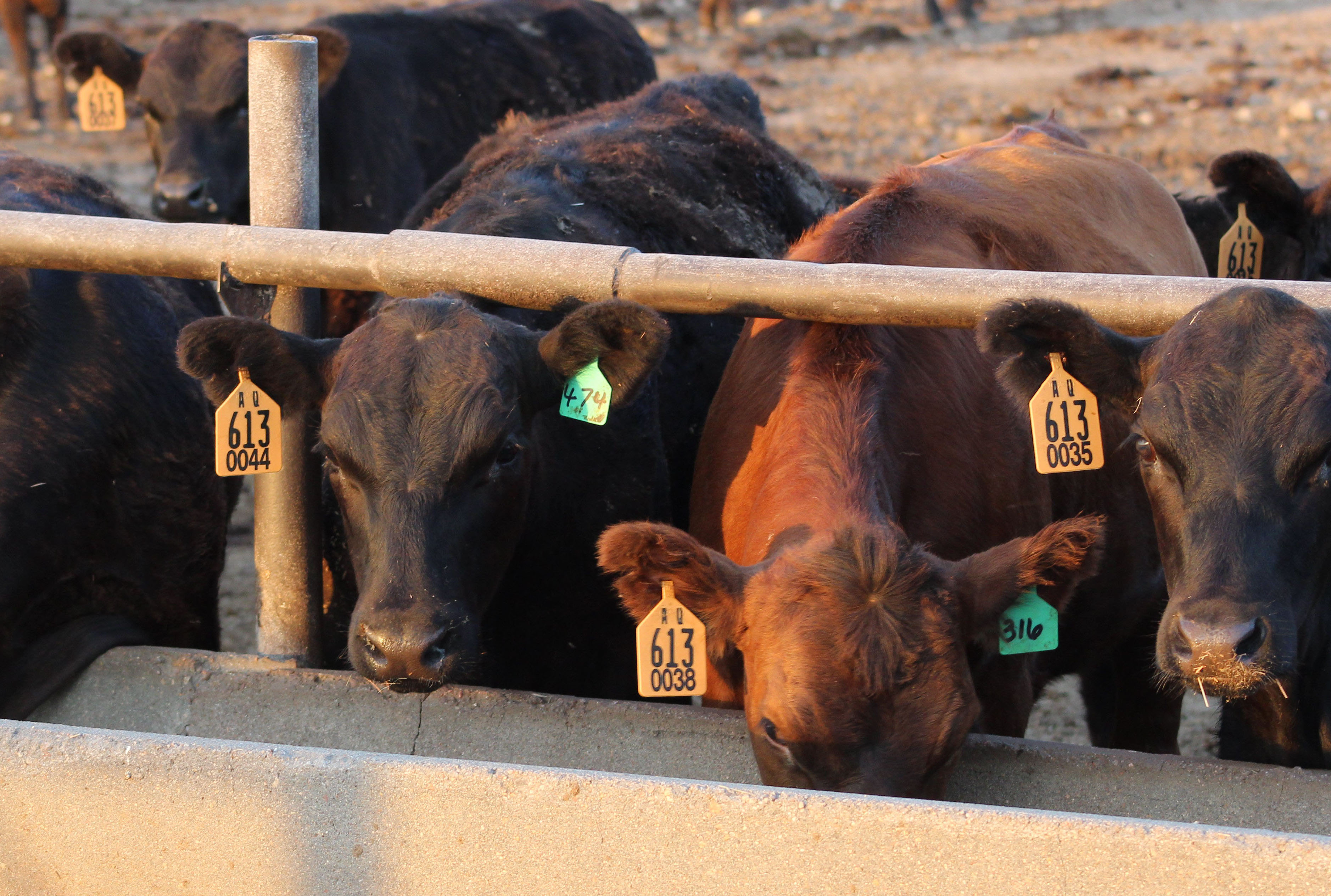
A proper diet promotes gut health in cattle. | Download this photo.
Cattle Chat: How to promote good gut health
A K-State beef cattle nutritionist talks about the importance of maintaining a healthy diet
June 6, 2023
By Lisa Moser, K-State Research and Extension news service
MANHATTAN, Kan. — Anyone who has experienced too much gas in their belly knows how uncomfortable that can be. In cattle, digestion troubles can be problematic to their overall health, said Kansas State University beef cattle nutritionist Phillip Lancaster on a recent Beef Cattle Institute Cattle Chat podcast.
“The cow’s stomach is divided into four chambers — the rumen, reticulum, omasum and abomasum — and the one we are usually focused on when speaking about maintaining gut health is the rumen,” Lancaster said.
He said the keys to good gut health for cattle are striving to feed a diet that leads to the proper pH balance in the rumen, thereby keeping acidosis from occurring; and the curation of healthy microbial growth in the rumen, which comes from cattle chewing their cud.
Along with rumen health, Lancaster said it is important for that diet to promote proper digestion throughout the lower gastrointestinal tract.
“Cattle can experience adverse effects if there is a foreign pathogen that interrupts the normal microflora anywhere in the GI tract,” Lancaster said. He gave the example of diarrhea as a symptom that happens when the microflora is out of balance.
One of the goals of feeding cattle a proper diet that promotes good gut health is to keep the lining of the intestinal tract from getting damaged.
“If there is damage to the gut wall, bacteria can move into the bloodstream and cause abscesses to develop in the liver,” Lancaster said.
He added that cattle that consume diets high in starch, which typically happens in the finishing phase, have a limited capacity to absorb that in the small intestine resulting in hindgut acidosis that could lead to ulcers developing.
Lancaster and his research team at the Beef Cattle Institute are studying places in the GI tract where microbial fermentation is occurring.
“Our goal is to develop some interventions to prevent liver abscesses from occurring,” he said.
To hear the full discussion, listen to the Cattle Chat podcast online or through your preferred streaming platform.

